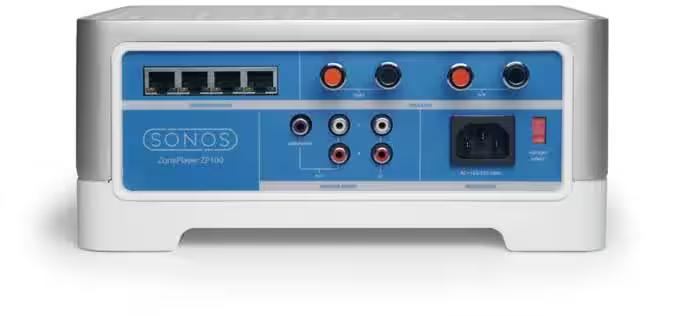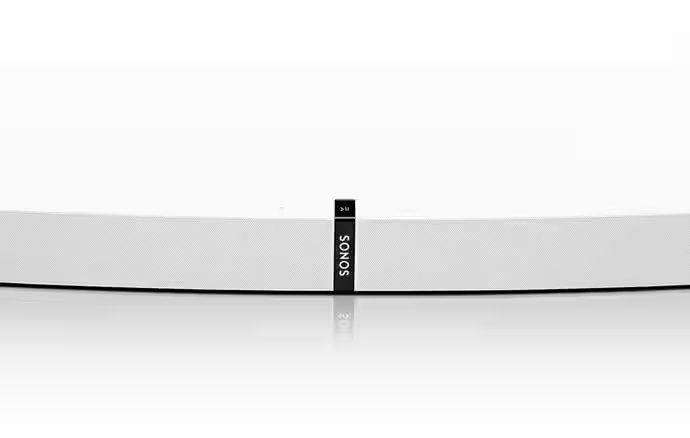Becoming audio excellence and transforming the way people listen to music without knowing anything about it. Put like that, the Sonos story resembles a legendary feat, but that’s the way it is. All fans of the Seven Notes today are familiar with the quality of the products made by the company based in Santa Barbara, California, yet at the beginning of the story, the success Sonos has achieved over the last few decades might have been just a mirage.
Before coming to found the company in 2022, the four founders, John MacFarlane, Craig Shelburne, Tom Cullen and Trung Mai, had joined forces to ride the new wave generated by the arrival of the Internet by launching software.com and phone.com. A shared passion for music and frustration at the technological limitations for high-quality listening inside the home and office at the time convinced the team to find a solution to exploit wireless to provide multi-room listening with exceptional sound reproduction. There were no certainties but one conviction: the future of music will come through the local area network and, later, audio streaming.
From the first wireless speaker to soundbars
To understand how bold the gamble was, one must remember that, at that time, liquid music did not yet exist. There was no Spotify or even iTunes, only CDs and MP3s. So, to listen to good music at home, you have to be full of cables and have good technical knowledge to handle them.
A first breakthrough came during the D: All Things Digital in 2004, with the first public release of ZonePlayer 100, later known as ZP100, in a small hallway while Steve Jobs unveiled the future of Apple on the main stage of the event. The encore of praise obtained the following year during the first appearance at CES was the springboard for Sonos, which launched its first product, the ZP100, at the end of January 2005.
The tech press praised Sonos for its design, sound quality, ease of configuration, and reliability. Not least because to avoid connection problems, which are still unreliable and widespread, Sonos initially required one of the players to be connected via Ethernet to the user’s router.
Sonos
Pioneering work to develop the multi-room system and mesh networks changed the way people interacted with music. After the ZP100’s good start and satisfying sales, Sonos turned its attention to developing an ecosystem, which was expanded with the launches of the Play:5 (2009), Play:3 (2011), and Play:1 (2013) wireless speakers.
Following the evolution of the tech sector, Sonos’ success is due to the goodness of its products but also to its design: minimalist but with an extreme attention to detail, thanks also to the use of high-quality materials, such as the plastic resin for speakers and subwoofers developed in its own laboratories. Focusing on excellence in sound reproduction, Sonos broadened its horizons to improve audio while watching images and videos. This gave rise to Playbar, the first soundbar the company launched in 2013, which was followed by the Playbase, less popular but more significant for the future shape of the device.
Sonos’ partnership with Ikea, inaugurated by Symfonisk, a 2-in-1 with elegant lines that combined a loudspeaker and a table lamp, was also instrumental in spreading the brand. It was a crossover that enhanced the future of both, as the Swedish company discovered a new sound experience while the American team deepened its know-how in terms of interior design.




The first headphones and the app flop
Sonos has continued to churn out excellent products in recent years, including its debut in the wireless headphone segment. As was the case with other types of devices, the Sonos Ace immediately stood out as an industry benchmark, thanks to its effective noise cancellation and seamless integration with soundbars. Speaking of quality listening, Arc Ultra is the latest product to be released: a revamped version of the Arc soundbar, equipped with the new Sound Motion technology that better reproduces low frequencies, even without the aid of the subwoofer.
Amidst so many successes, however, there was also a resounding flop that challenged Sonos’ capabilities. This was the update to the smartphone app released on 7 May, which manages the wireless speakers. While simplifying navigation, users have complained vociferously about the disappearance of several features, such as the ability to search for music within a library hosted on a server on one’s local network, as well as the scheduling of alarm clocks, changing the playback sequence and the sleep timer.
With poor customer feedback, Sonos gradually reintroduced the required functionality. To make amends, company CEO Patrick Spence announced that executives will waive their annual bonuses and that the warranty on some products will be extended by one year. That there is something to review within the company is also evident from the 100 or so redundancies made last August, which affected the software and marketing divisions.
Sonos’s good fortune is that the wrong strategic choices have not affected its product development, which remains among the best in audio. The Santa Barbara-based company must pursue this priority: to offer speakers, soundbars, and headphones that ensure superlative listening.


